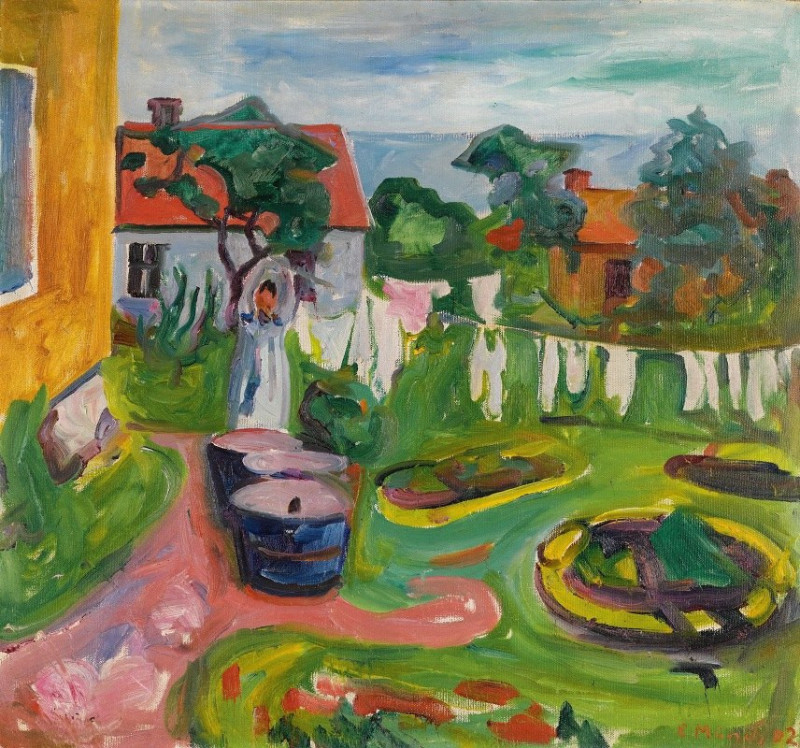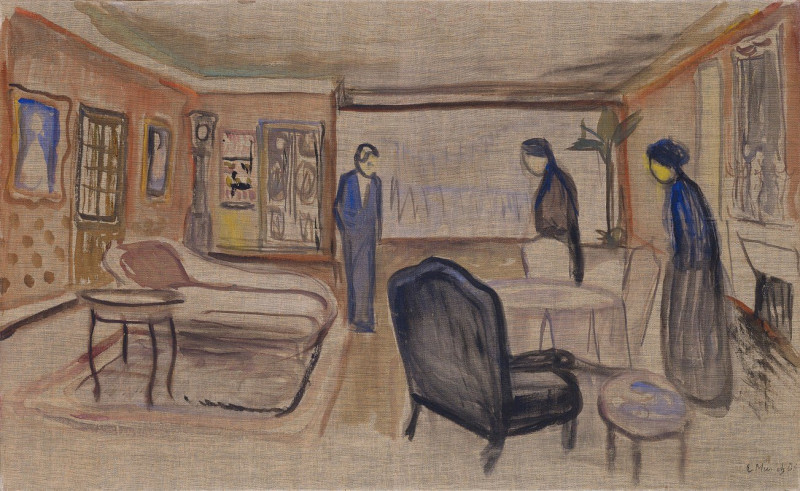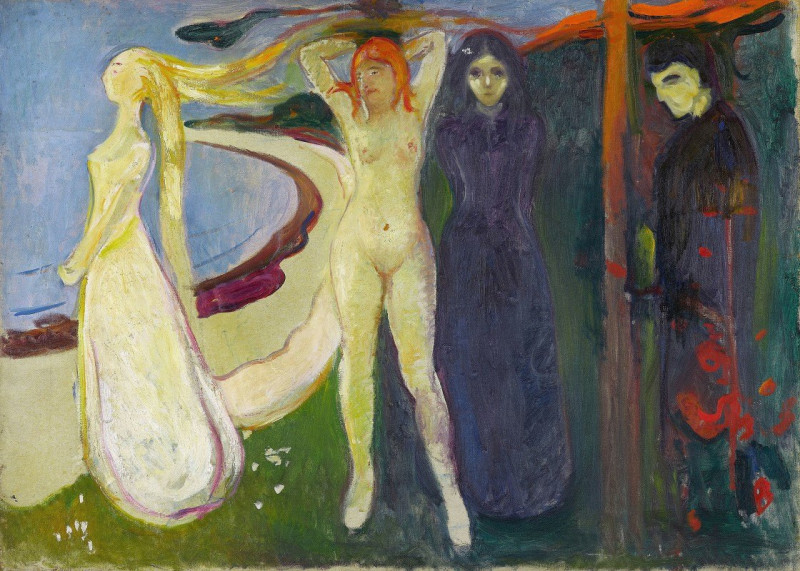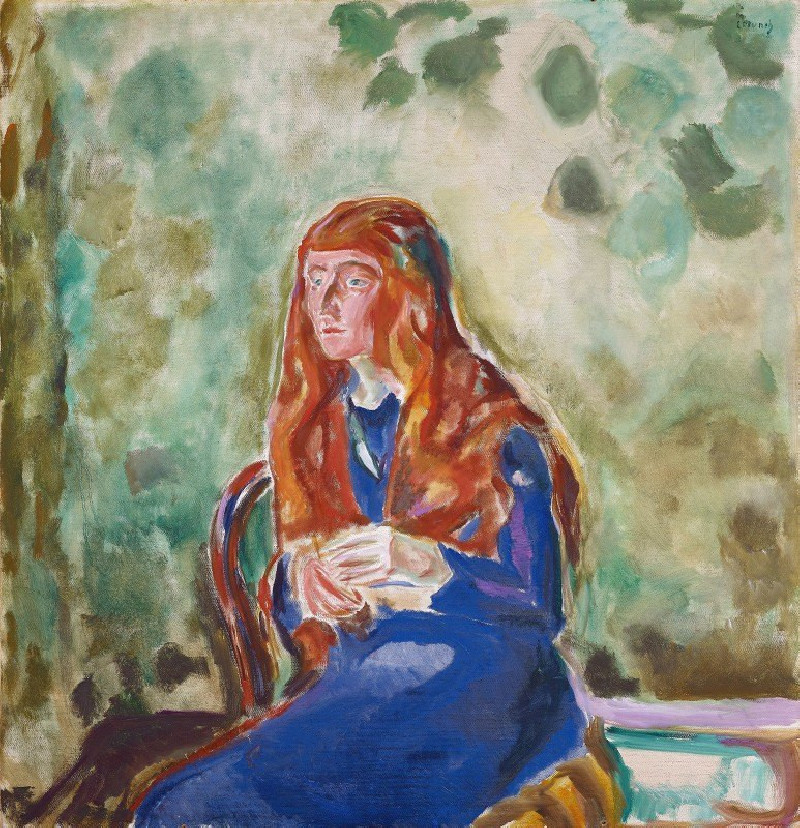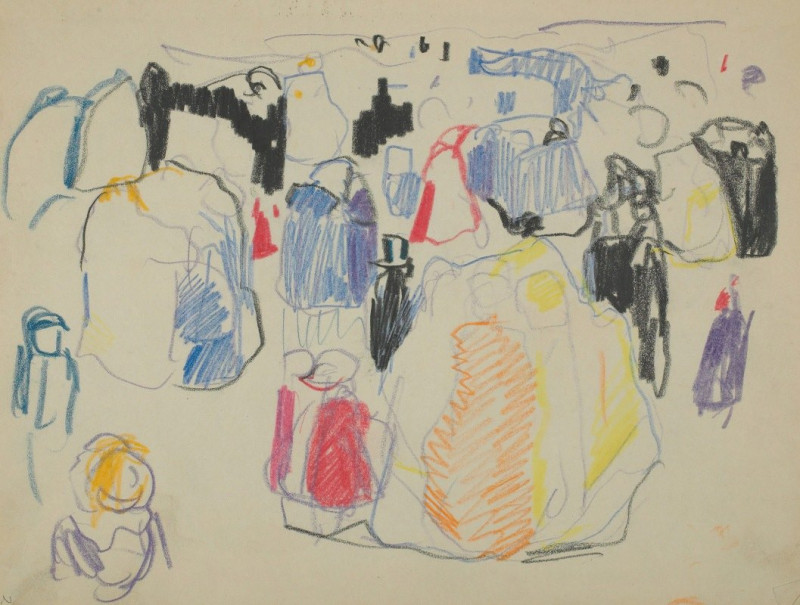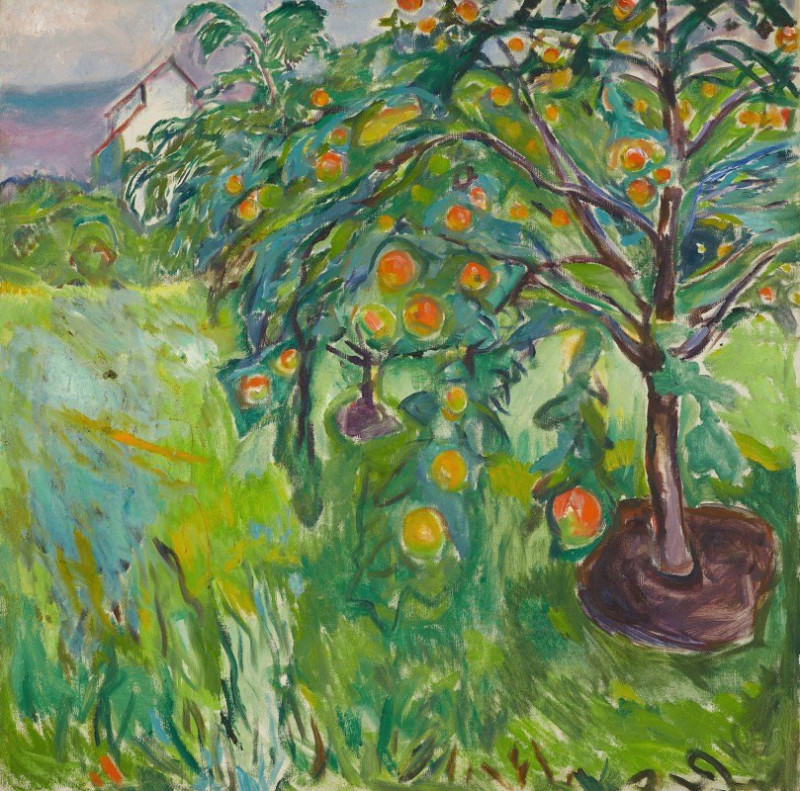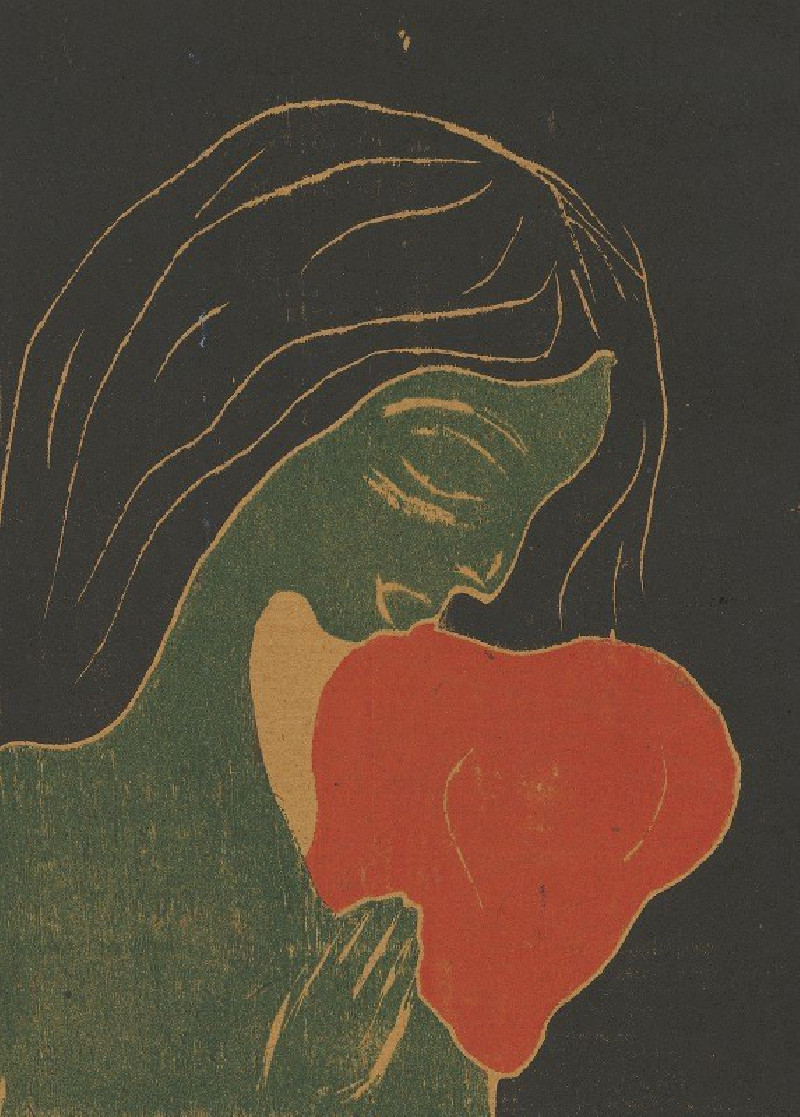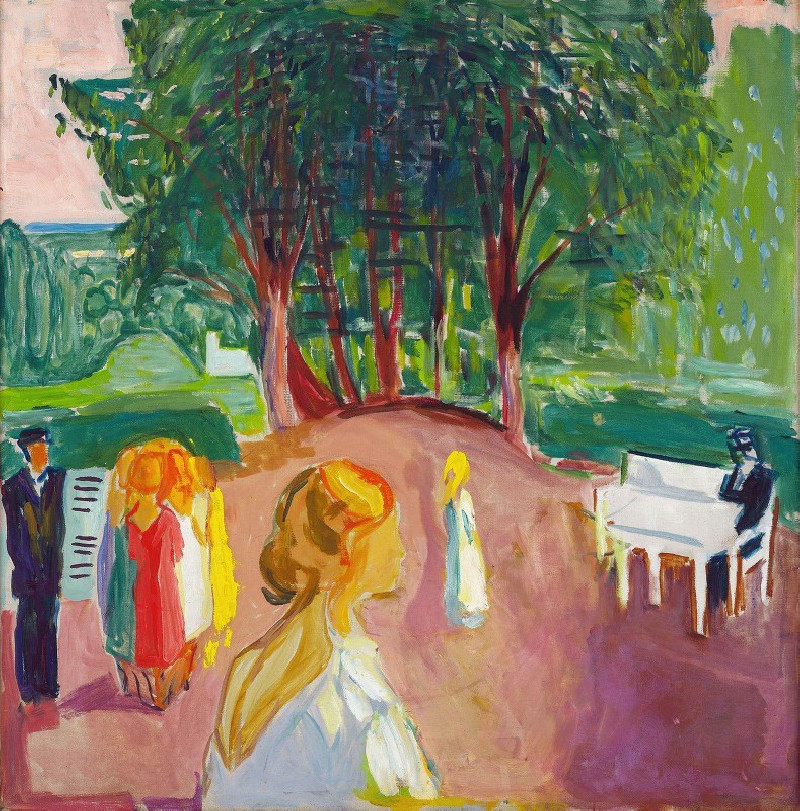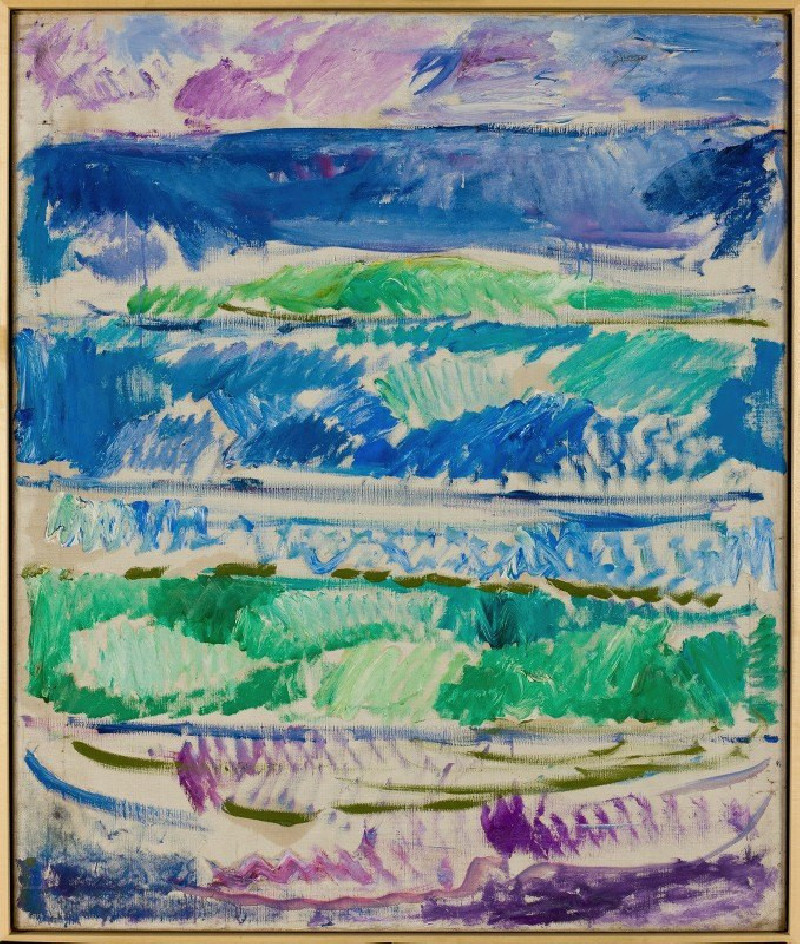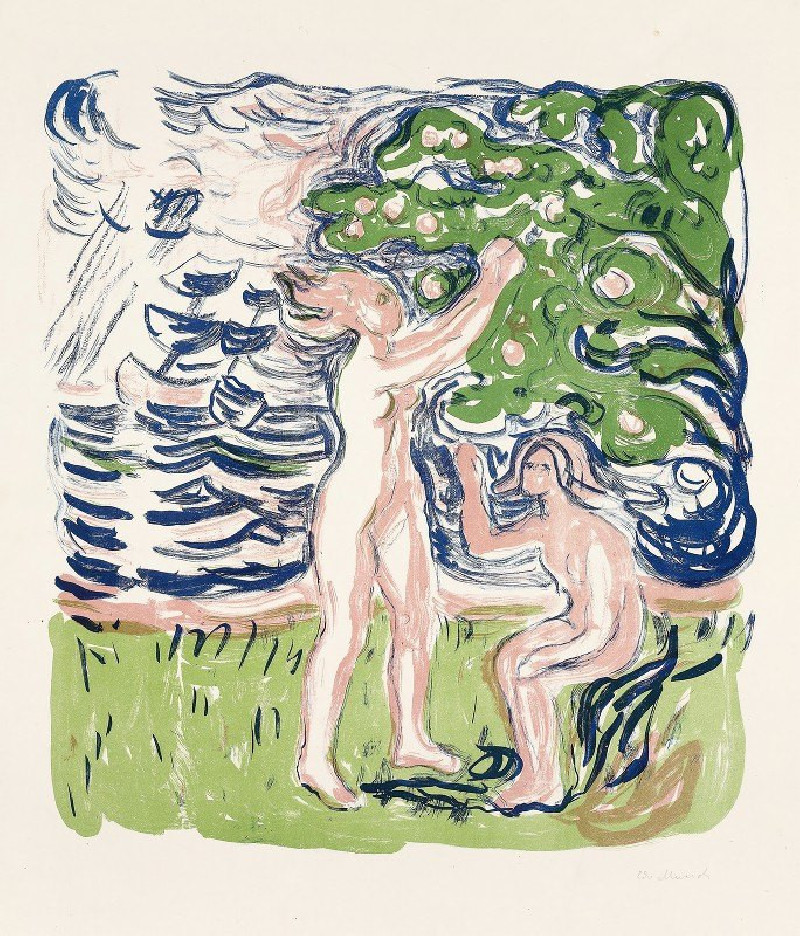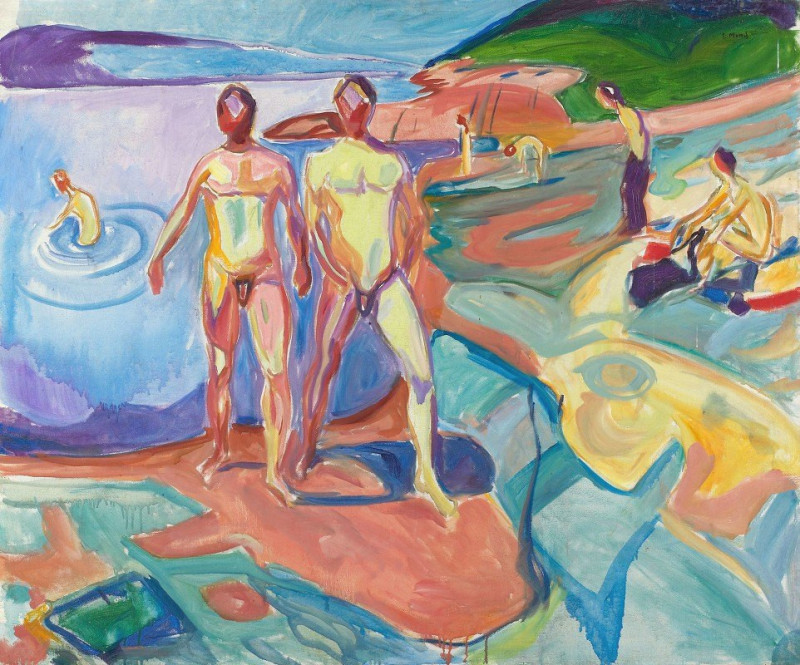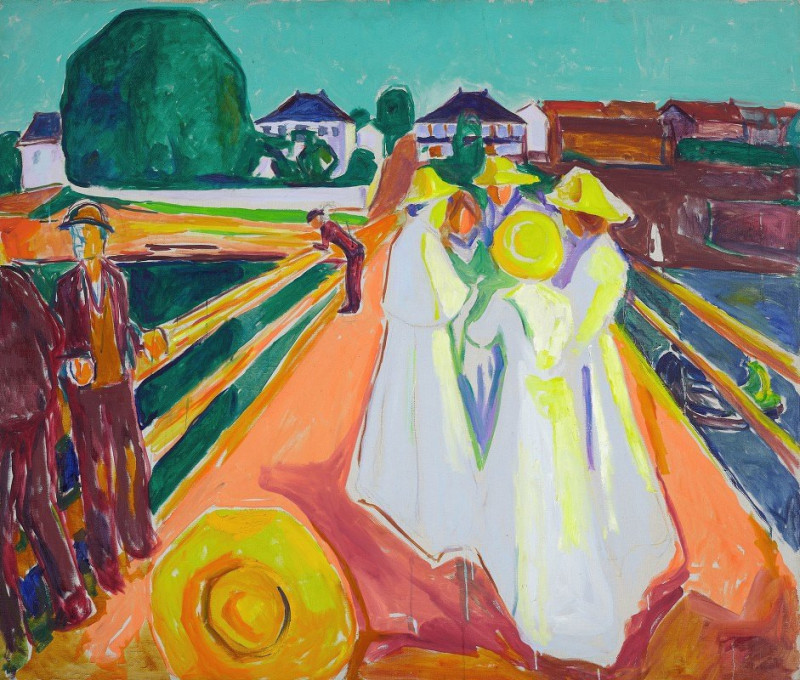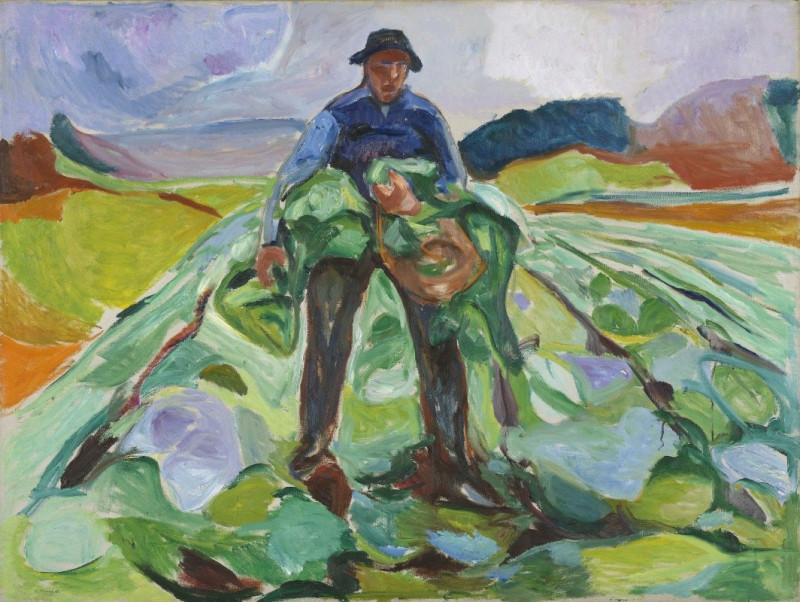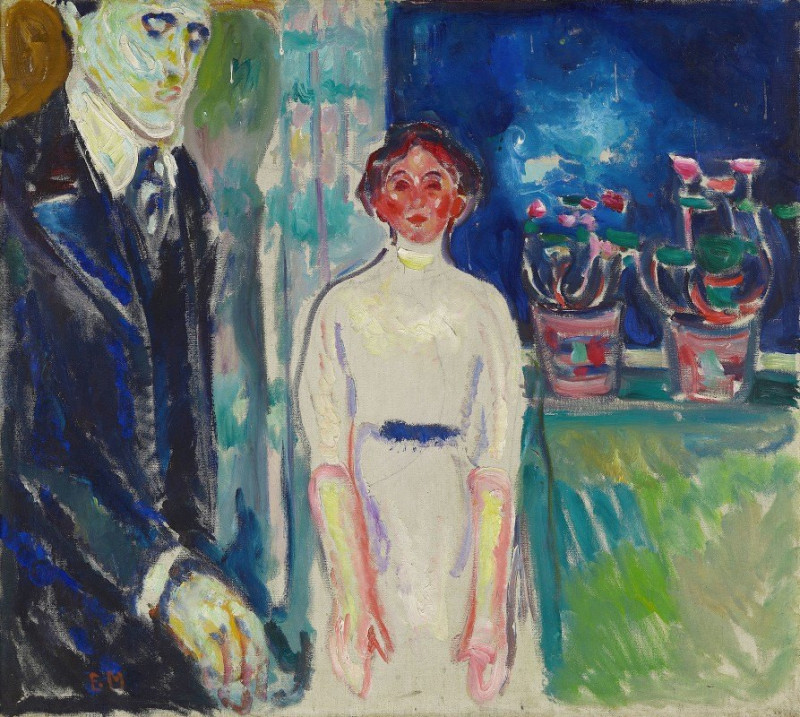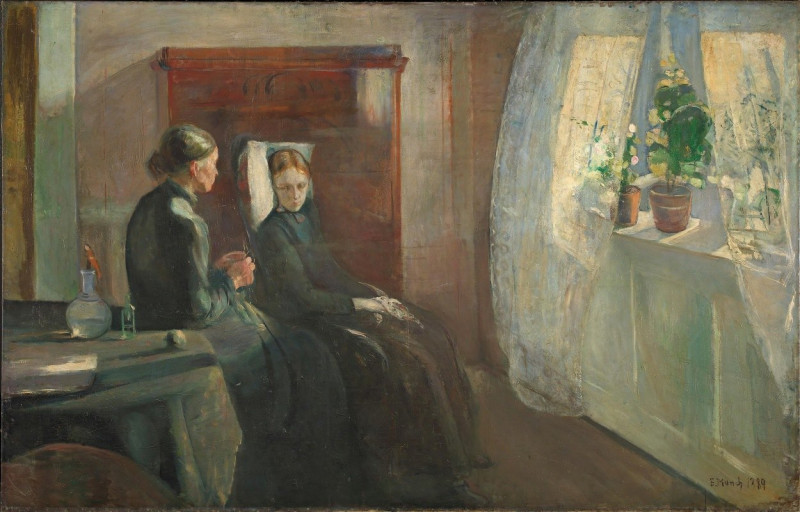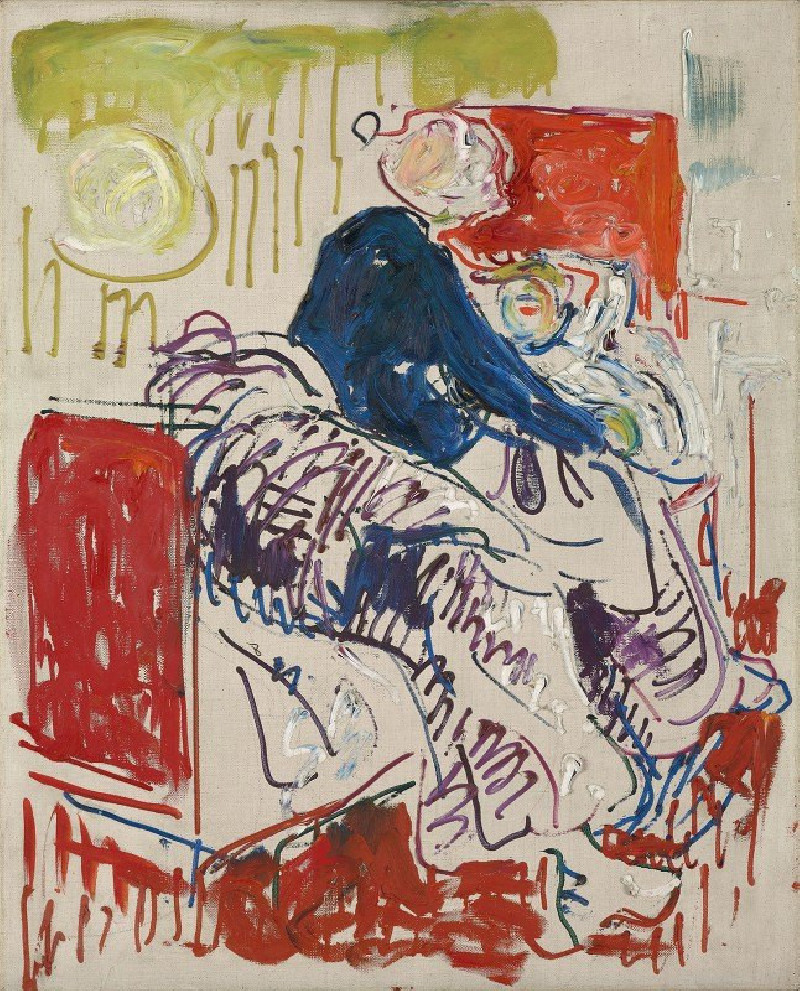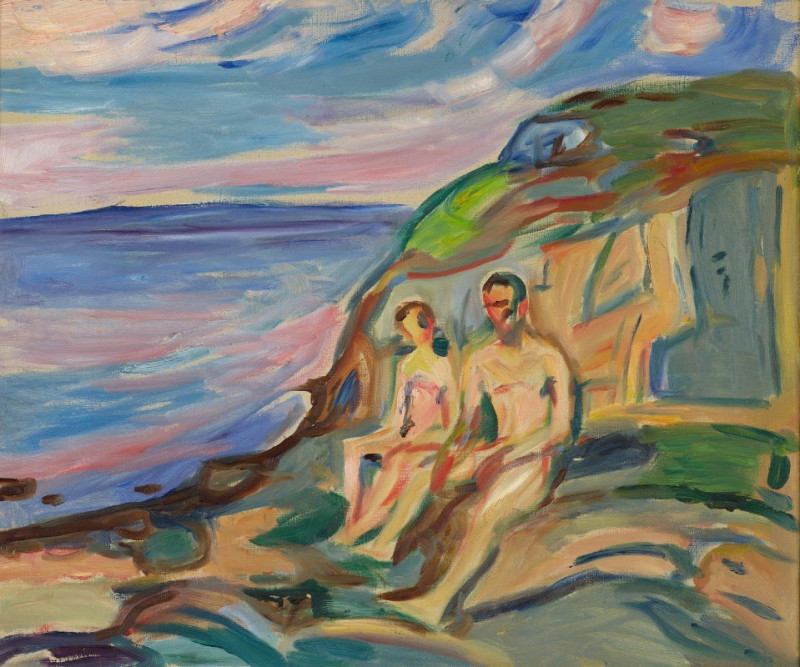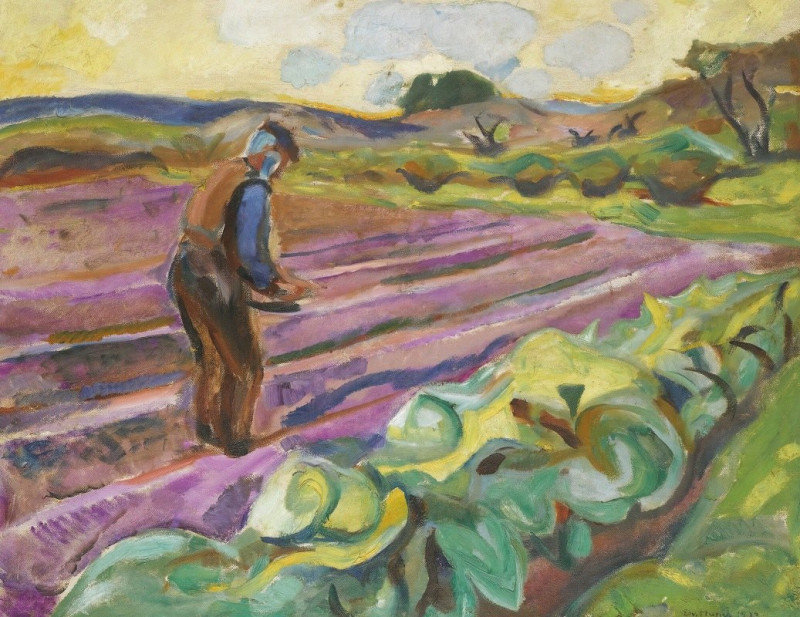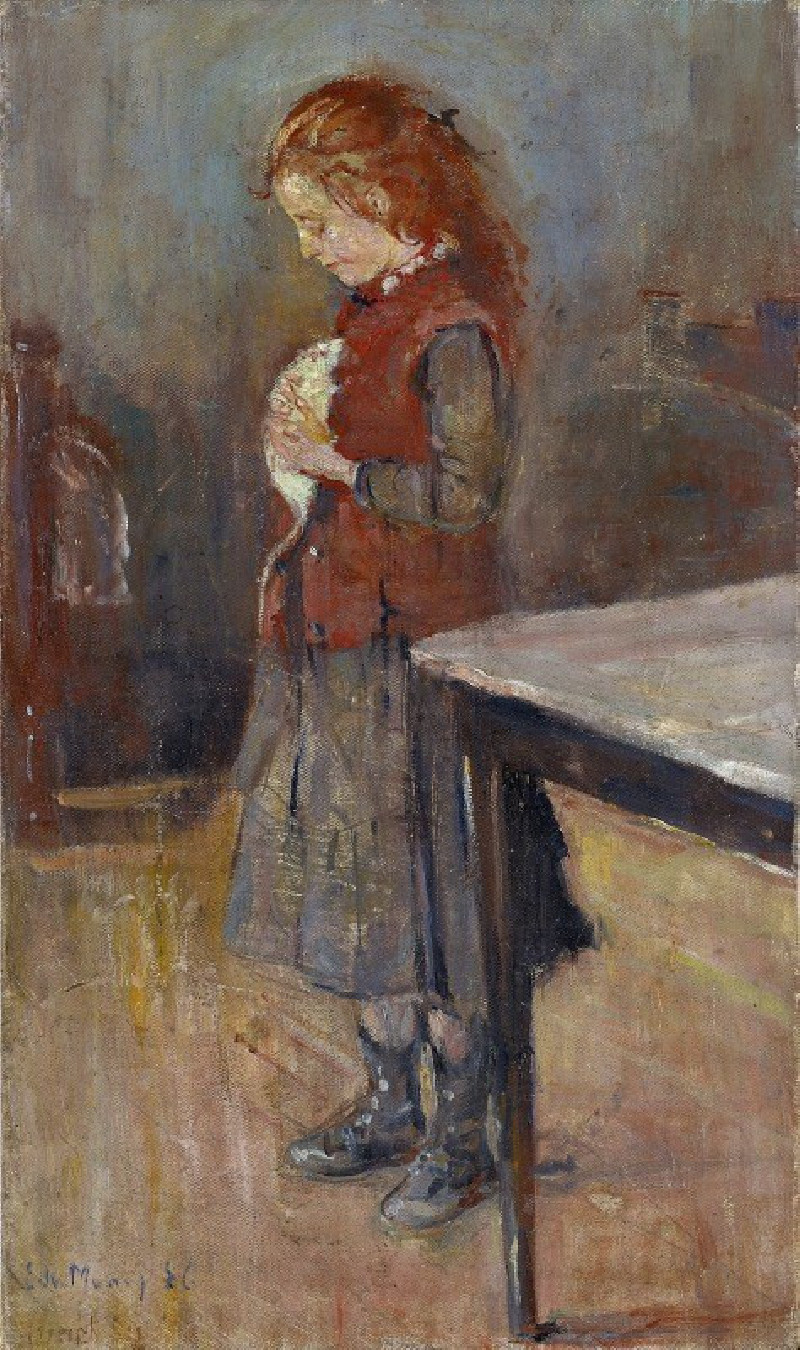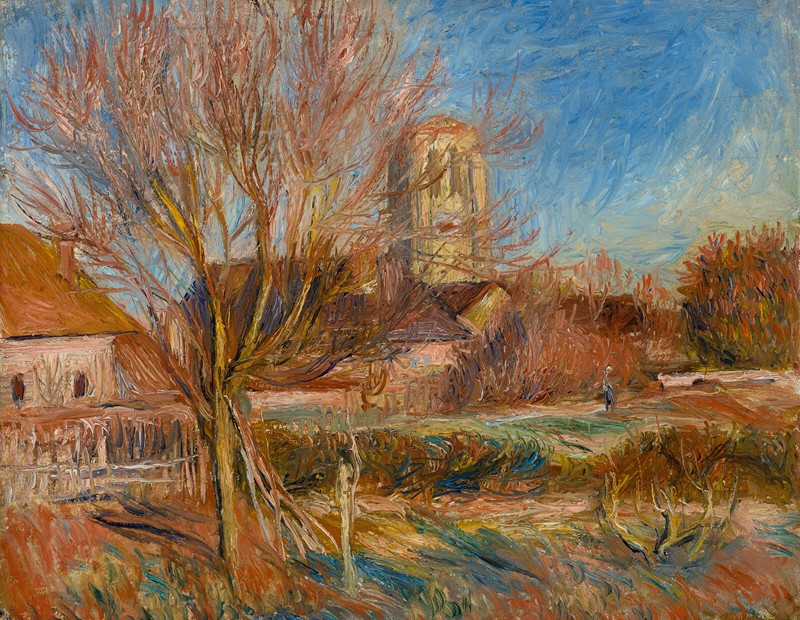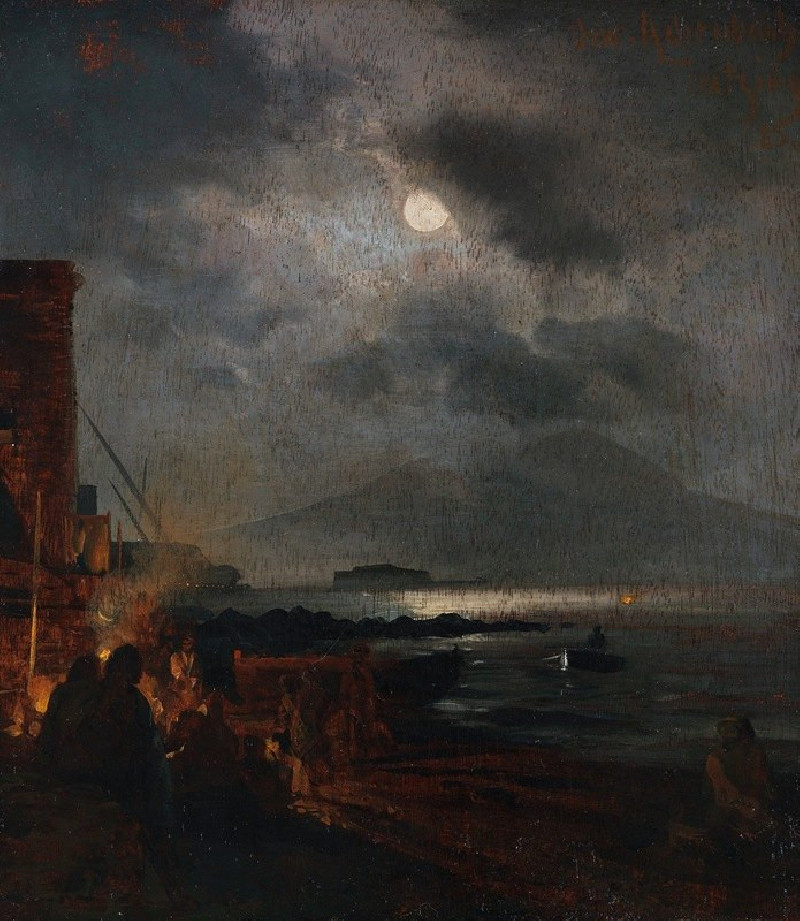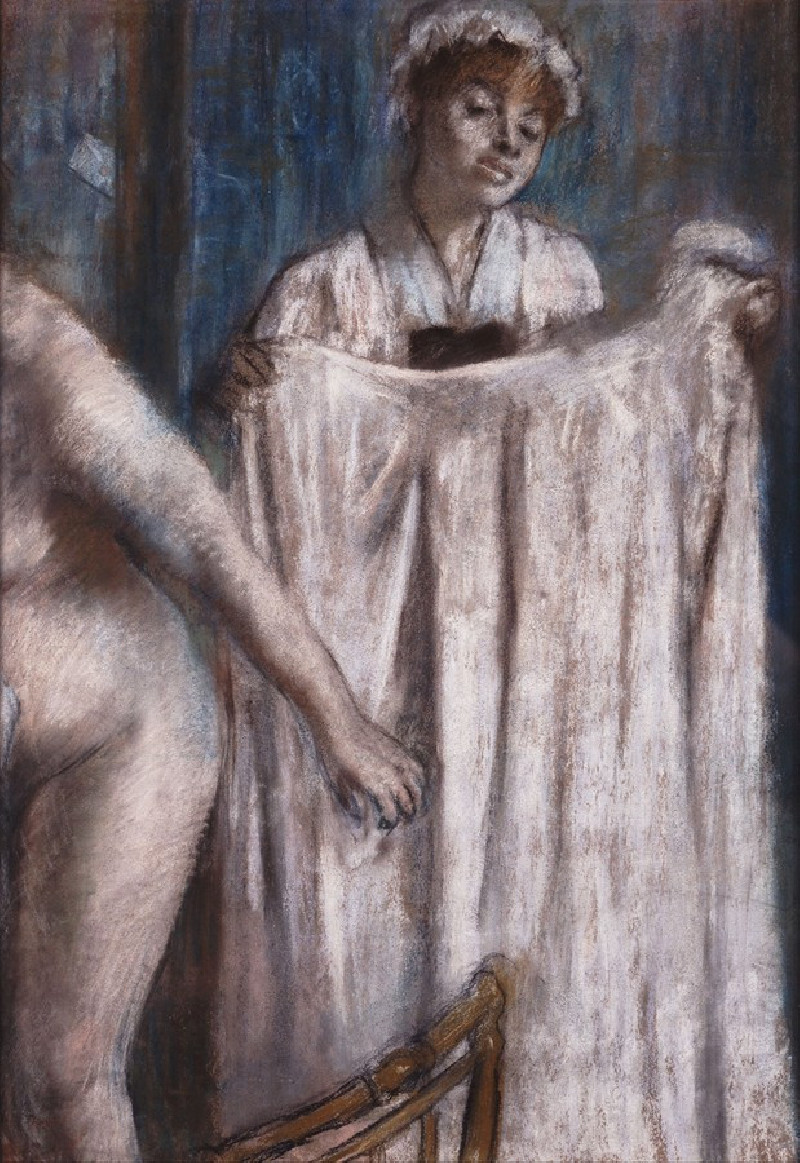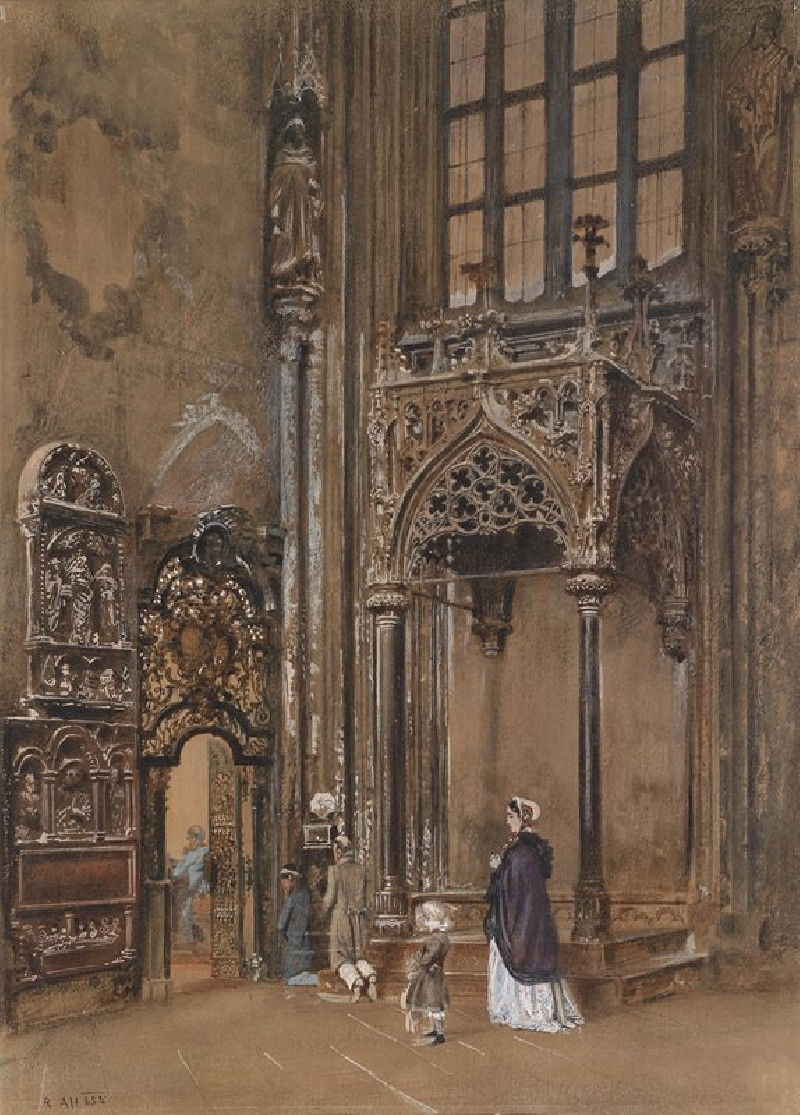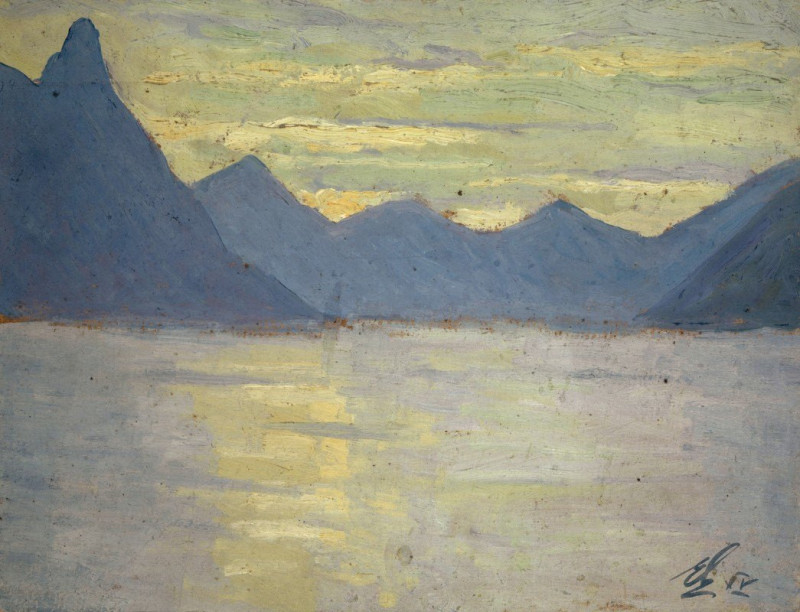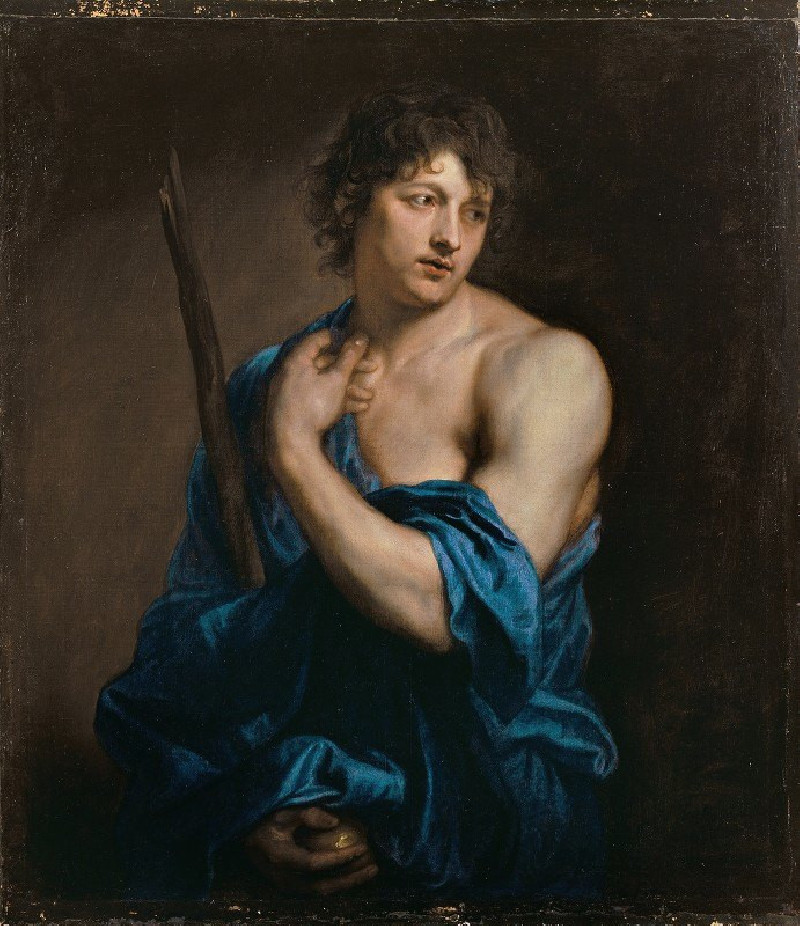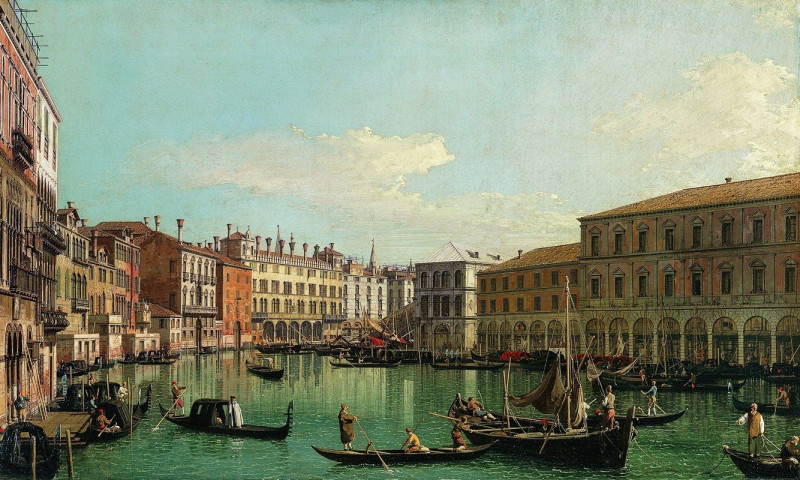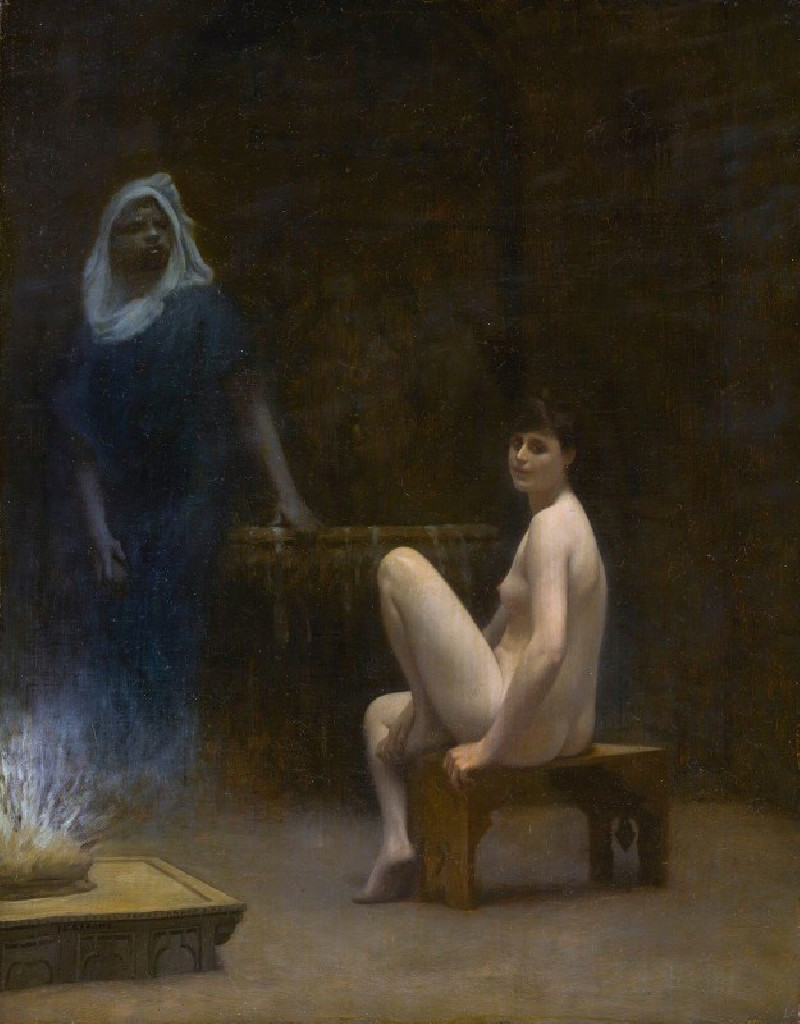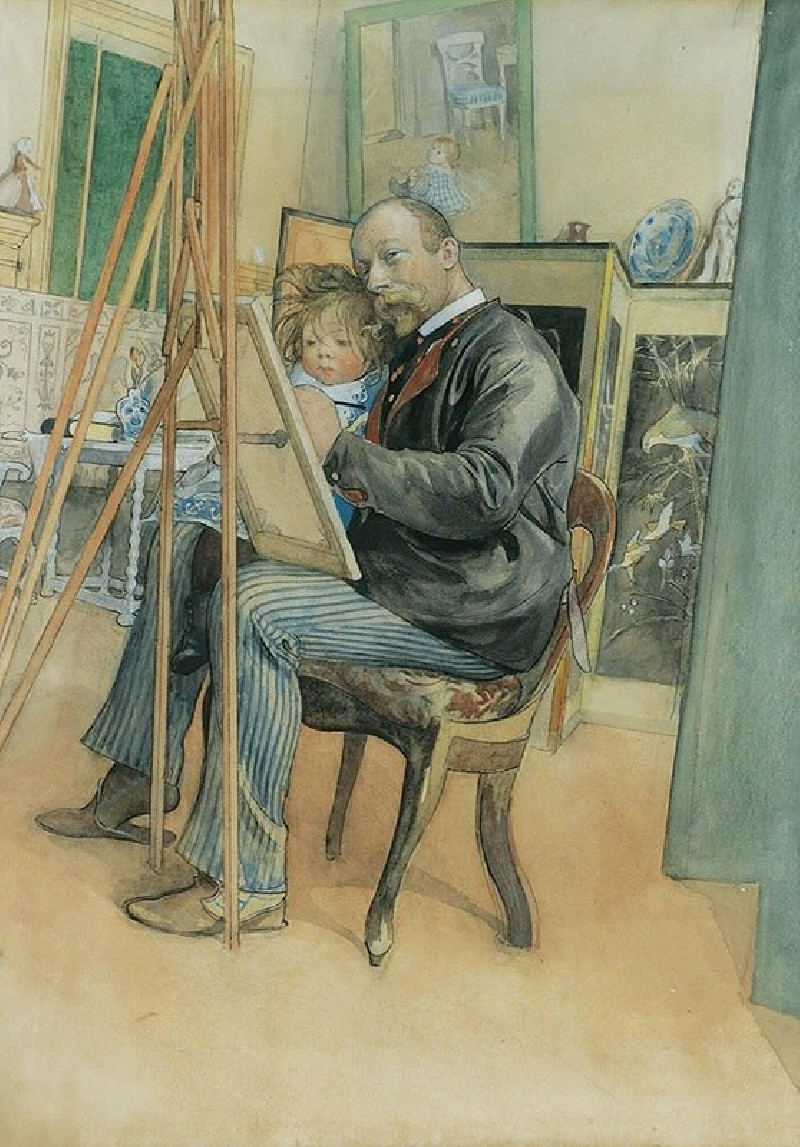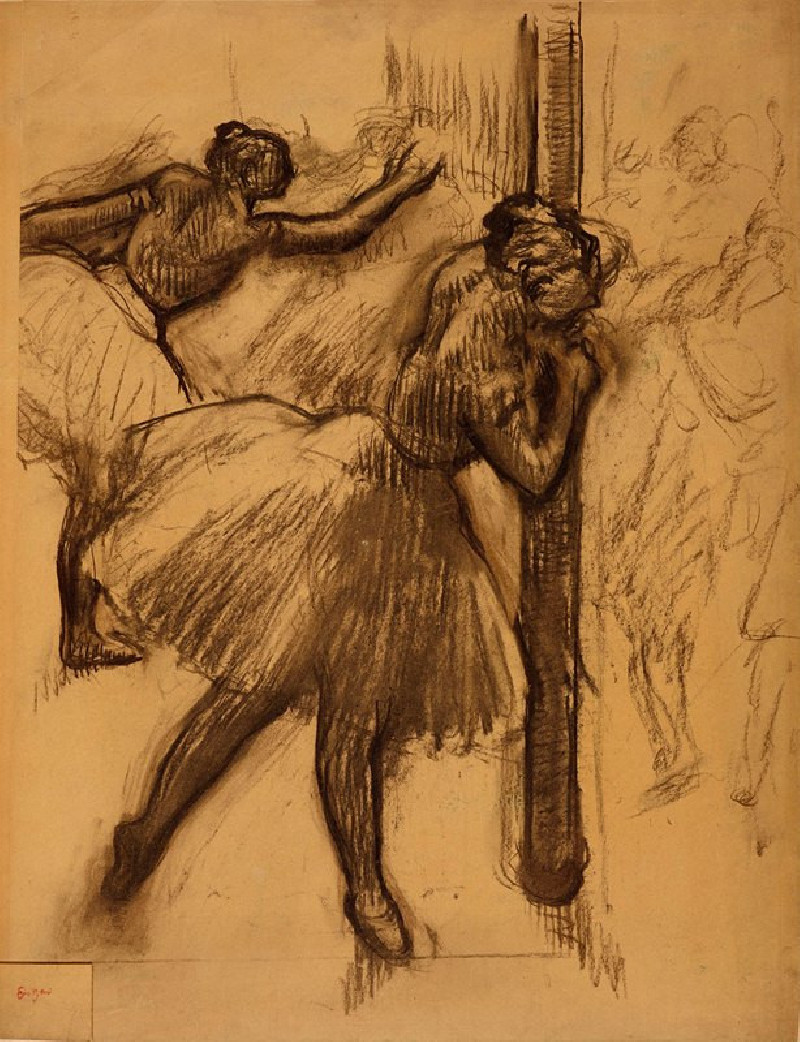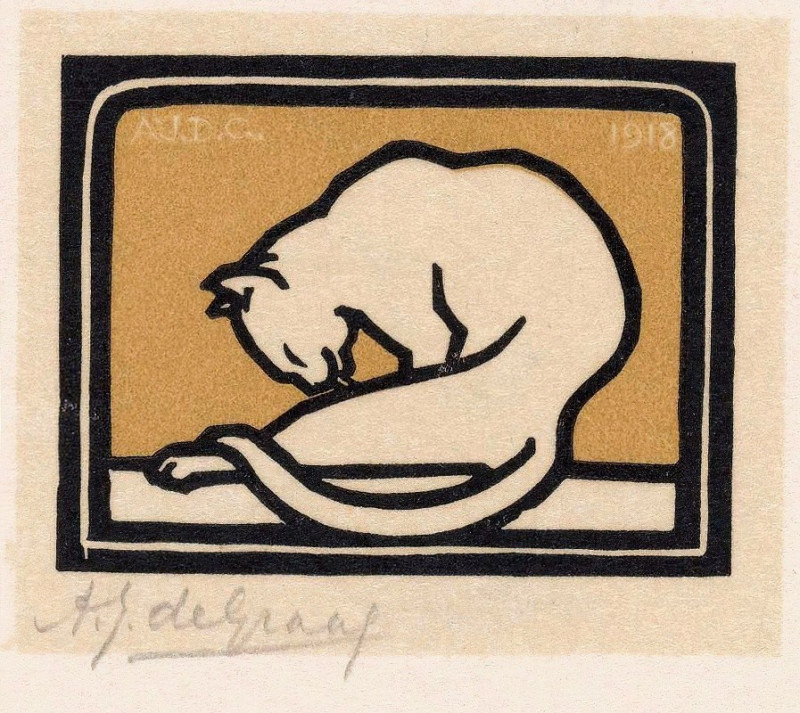Tingletangle (1895)
Technique: Giclée quality print
Recommended by our customers
More about this artwork
The painting "Tingletangle" by Edvard Munch, created in 1895, offers a vivid glimpse into a lively cabaret or social scene, characterized by Munch's distinctive style that blends emotion and atmosphere. The composition is a dynamic mix of figures and colors, centred around a cabaret dancer in a flowing red dress, capturing attention with her pose and the movement of her skirt. She stands in the middle of a stage or performance area, surrounded by spectators.On the left side of the painting, you can see a prominently featured woman, seemingly indifferent or disengaged, gazing away from the spectacle. The background behind the dancer displays other seated women, characterized by their varied expressions and attire in muted colors, possibly other performers or members of the audience. Their faces and posture suggest varying degrees of interest or ennui.The right half shows a group of onlookers, primarily consisting of men, whose faces and attire are rendered with quick, expressive strokes, suggesting their engagement or conversation about the performance. The setting, likely a cabaret venue, includes drapery and simplistic renderings of the interior environment that frame the central action.Munch’s use of color and line in "Tingletangle" creates a sense of immediacy and emotional undercurrent, typical of his work, which often delves into themes of human psychology and expression.
Delivery
Returns
Edvard Munch (12 December 1863 – 23 January 1944) was a Norwegian painter. His best known work, The Scream (1893), has become one of Western art's most iconic images.
His childhood was overshadowed by illness, bereavement and the dread of inheriting a mental condition that ran in the family. Studying at the Royal School of Art and Design in Kristiania (today's Oslo), Munch began to live a bohemian life under the influence of the nihilist Hans Jæger, who urged him to paint his own emotional and psychological state ('soul painting'); from this emerged his distinctive style.



